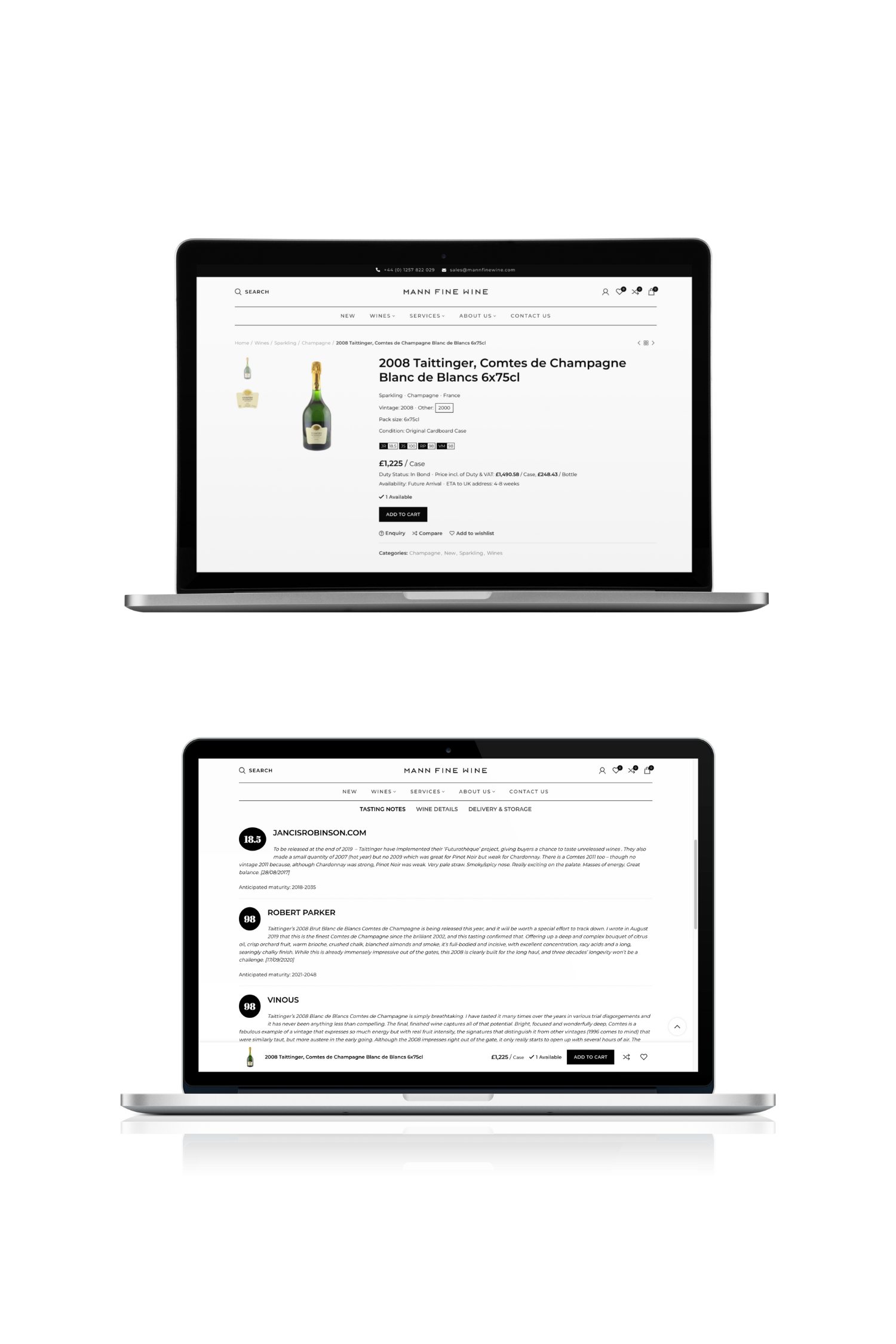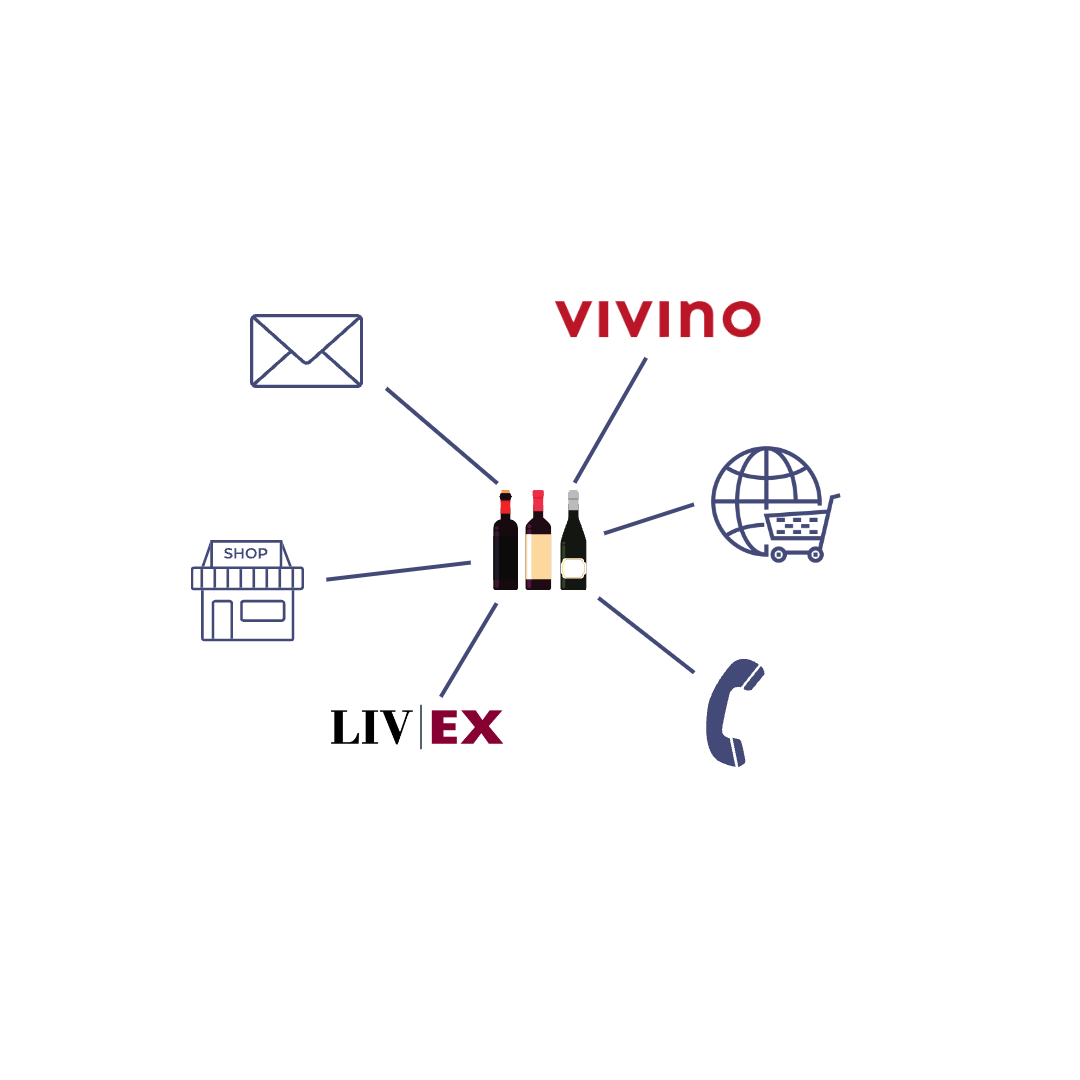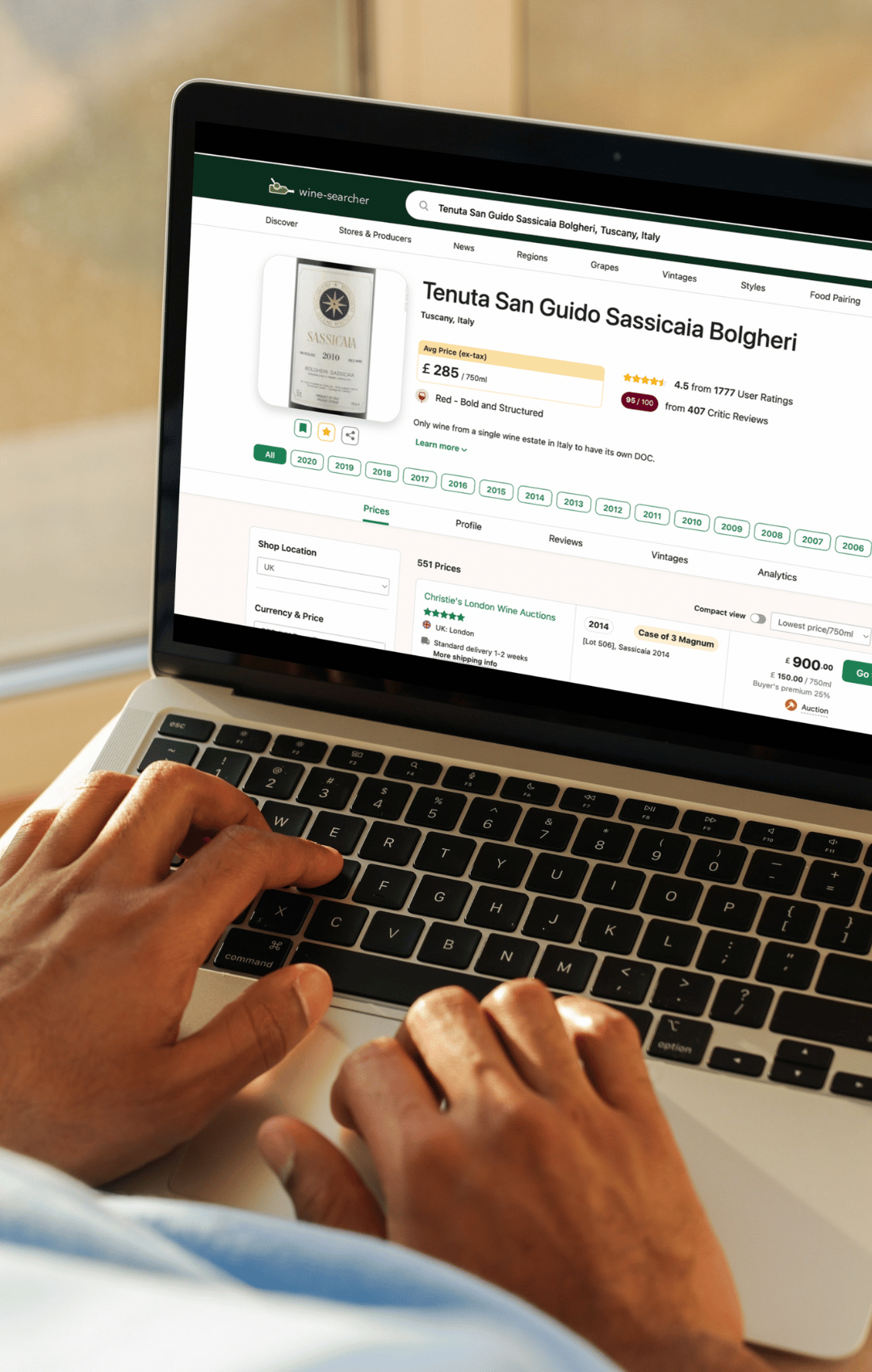Wine eCommerce growth playbook

A step-by-step guide to building a profitable, low-maintenance and fully integrated wine and spirits eCommerce channel that drives sales across all your routes to market.
Whether you’re launching your first wine eCommerce store or refining an existing setup, this playbook walks you through the essential steps to build a fully integrated, low-maintenance online channel that actually drives results.
From avoiding costly disconnects between stock and sales, to designing a seamless customer experience across every touchpoint — this guide helps you create a wine eCommerce strategy that delivers real ROI. Read on for practical insights, common pitfalls to avoid and expert tips to grow your online wine business with confidence.
Step1. Stock management
Wine eCommerce is a vital channel for growing your fine wine business — but when it’s not set up properly, it can frustrate customers and damage your reputation. Think about the last time you clicked on a wine online, only to find it was already sold out. It’s a deeply frustrating experience — and usually happens because the website isn’t properly connected to the business’s inventory system.
Without full integration, your online shop is always playing catch-up — showing wines that aren’t available and missing out on sales of those that are.
Your wine eCommerce or wine business management system is responsible for stock management, shipping and movements, purchasing and generation of sales orders. The same wine eCommerce system should also master your inventory irrespective of its type – e.g. physical stock, en primeur, due stock sitting on pending purchase orders, along with brokered/client consigned wines and third party stock lists (what we call virtual stock) typically offered by wholesalers or importers.
So it follows that mastering inventory on your wine eCommerce system will guarantee an accurate and up-to-the-minute position of wines for sale on your website, an essential starting-point for wine eCommerce.
Yet wine eCommerce is commonly treated as a separate project, with different technical teams and inadequate levels of integration. The complexity of coding the rules from scratch for all those stock types is what takes time, and, by way of example, should include all options for delivery including into a storage account (duty and sales tax suspended or otherwise), tax payment rules for each type of inventory, calculation of margin by SKU within mixed cases.
Step 2. Smart data, richer content
In wine eCommerce, your user experience is only as good as your data — and that starts with a structured, well-thought-out schema. Clear definitions of wine attributes (like producer, region, grape variety, designation, bottle size, and stock type) create intuitive filtering and searching. That’s what enables users to find what they’re looking for quickly, and discover more along the way.
Rules that govern stock types, pricing logic, tax handling, and delivery options should be predefined and consistently applied. This not only ensures compliance and accuracy but also saves significant time and reduces risk when scaling operations.
Critically, rich, supporting content drives engagement and sales. This includes tasting notes, critic reviews and scores, producer bios, drinking windows, food pairing ideas, bottle shots, and your own recommendations. In our Buyer Satisfaction Survey, 69% of private clients said critic reviews were the most important factor in deciding what to buy.

Beyond individual products, clear product taxonomy and categorisation (by region, style, variety, etc.) builds user confidence and enables Google to index your pages more effectively. The result is better navigation, stronger SEO, and higher conversion rates.
Mixed cases, themed bundles, and curated offers are always popular and encourage customers to explore new wines — but only if they’re easy to find and buy.
These best practices are supported by industry-specific database structures. Pre-loaded critic content, consistent definitions, and systematized attributes reduce the need for manual data entry and lower the chance of error. Avoid systems where inventory and pricing are fed in from elsewhere, but all content has to be manually added or rekeyed in your website CMS — that setup is inefficient and difficult to scale.
Ultimately, mastering your product data and content management leads to:
- A seamless, low-maintenance customer experience
- A single source of truth across sales channels
- Higher engagement and better business performance
In short, great data drives better buying decisions — and better results for your business.
Step 3. One inventory, many channels: Why integration matters
Your wine eCommerce website doesn’t exist in isolation, it sits within a wider sales ecosystem that includes your physical shop, email offers, phone orders, trading platforms like Liv-ex and marketplaces such as Wine Searcher and Vivino.
Specialist fine wine merchants almost always sell across multiple channels, because personal service and trusted advice are core to how customers buy at the premium end of the market. But managing all those routes to market doesn’t need to mean juggling multiple systems or slicing up your inventory.

The most effective eCommerce set-ups master a single, accurate stock position and from there, tailor what’s shown, where it’s shown and how it’s priced. This avoids overselling or underselling and gives your customers a clear picture of what’s available and when.
Your software should allow you to:
- Choose what stock appears where (e.g. in-store only, online shop, private offer)
- Set custom pricing by channel or customer group
- Optimise your margins depending on the route to market (e.g. website vs. Vivino)
- Communicate availability clearly — including future arrivals, pending consignments or en primeur releases
Whether you’re starting from scratch or integrating with an existing platform, make sure your system supports multi-channel control, real-time stock updates and tailored experiences — without relying on duplicated lists or manual spreadsheets. That’s what sets up your wine business for sustainable, scalable growth.
Step 4. Automation and scalability
Engaging, dynamic content keeps customers coming back — and buying. But in fine wine, volume strategy looks different: you might not want to show you have 100 cases in stock. Showing six creates scarcity, builds demand, and lets you move with the market.
A good wine eCommerce platform gives you full control over what appears online and how — from setting allocations to grouping wines for promotions, features, or campaigns. The right tools make it easy to batch price, discount, tag, and publish across your catalogue — and repeat that process reliably, every week or month.
Just as important is how you manage delivery expectations. Some wines are ready to ship next day; others are incoming or long-term pre-arrivals. Customer expectations vary depending on stock type — which is why your eCommerce needs to reflect fulfilment rules clearly and consistently.
Whether you want to adjust pricing by channel, show “Request Allocation” for rare wines, or tailor what’s visible per customer group, the key is control — driven by your inventory system and applied seamlessly to your online store. That’s what turns eCommerce into a relationship-building tool.
Step 5. Building customer loyalty
A successful wine and spirits eCommerce site is built on two things: the trust of your customers and the quality of your offer over time.
With a well-positioned, future-ready platform that delivers a smooth and engaging user experience, you can grow your audience, strengthen loyalty, and drive more sales — without losing the personal touch that defines fine wine retail.
Even long-standing clients may ‘jump channel’ to browse or buy online, so it’s essential that your eCommerce experience reflects their relationship with you. That means showing accurate information — from past purchases and stored wines to preferences and payment options — across both online and offline interactions.
To stand out, define who you want to appeal to, analyse what sells, and lean into what makes your business special. A wine-specific database that centralises product content and customer data makes this possible.
Advanced recommendation tools, like Preferabli, can further personalise the journey by using taste profiles to suggest alternatives — replicating the feel of an in-store conversation and helping to convert interest into action.

Step 6. Why the right team behind your eCommerce matters
Running a successful wine eCommerce business isn’t just about choosing the right software — it’s about having the right people behind it. When your technology partner understands fine wine and the way your business works, everything becomes easier: day-to-day operations, customer experience, and long-term growth.
Too often, wine businesses get stuck juggling multiple agencies, developers and disconnected platforms. The result? A website that feels separate from your business, drains your time, and struggles to deliver the results you hoped for.
What makes the difference is a single, central team that knows the wine trade inside out — and is focused on helping you succeed. That means no translating industry needs into technical language, no lengthy onboarding, and no starting from scratch every time you want to improve your online shop.
Look for a platform and team that:
- Specialises in the wine industry and understands its nuances — from broking and reserves to storage and complex pricing.
- Supports wine-specific features like tasting notes, critics’ scores, mixed cases, and tax/shipping rules based on product type.
- Helps you get your product taxonomy, data structure and user journey right from day one.
- Offers guidance on compliance, usability and customer experience — not just technical setup.
- Has a clear plan for future developments and integrations relevant to your business.
- Provides responsive, knowledgeable support when you need it — from a team that genuinely cares about your success.
The best wine eCommerce solutions aren’t just about features. They’re about backing your business with a team that gets what you do — and helps you do it better.
Step 7. Marketing tips
A data-driven approach is the backbone of effective digital marketing. In the fine wine world, that means combining your deep product knowledge with tools and techniques that help you reach and engage the right audience — at the right moment.
Be visible where it matters
Wine-Searcher:
If you sell fine wine, Wine-Searcher should be your first port of call. It’s where collectors, investors and enthusiasts go to compare offers. A properly structured wine eCommerce site can automatically generate feeds that link each listing directly to the right product page, making it easy for buyers to click through and purchase.
Google Search:
Ranking well on Google remains vital. That starts with making sure your wine eCommerce site is SEO-friendly — with product pages that are fast, mobile-responsive, rich in metadata, and built around a consistent taxonomy (region, varietal, vintage, etc.).
Invest time in keyword research to discover what your target buyers are actually searching for — and build your content strategy around it.
Experiment and Measure What Works
Google Shopping:
It might not be the first platform that comes to mind for fine wine, but Google Shopping is growing — and visibility here is free to set up. If your eCommerce system can generate a product feed, it’s worth testing how well certain categories perform, especially gift sets, mixed cases, and branded wines.
Know Your Audience:
Use research to understand evolving customer behaviours. We recommend reading:
- Areni Global’s “Future of Fine Wine Consumers”
- Our own Fine Wine Buyer Satisfaction Survey
Track the Journey:
Use tools like Google Analytics, Hotjar or HubSpot to understand how users interact with your site. Which content keeps them engaged? Where do they drop off? This is especially important if you offer rich experiences beyond the shop — like club membership, vintage guides, producer interviews, or event invitations.
Leverage AI for Smarter Marketing
Content Creation:
Use AI tools like ChatGPT to generate:
- First drafts of producer bios, vintage summaries or pairing suggestions.
- Email copy, blog intros, or promotional messages tailored to specific buyer personas.
- Metadata (page titles, meta descriptions, tags) to support SEO and product discovery.

Use Free Tools That Work Hard
HubSpot (free version):
Excellent for small teams, HubSpot gives you:
- CRM capabilities with email automation
- Easy integration with WordPress and WooCommerce
- Free access to a top-tier digital marketing training academy
Google Tools:
- Google Analytics and GA4 for site performance and traffic insights
- Google Search Console for technical SEO
Looker Studio to visualise data across channels
Final thoughts
Building a successful wine eCommerce business is a journey that combines passion for wine with smart, strategic execution. With the right team, tools and data-driven approach behind you, your online channel can become a powerful extension of your brand — delivering exceptional customer experiences, operational efficiency, and sustainable growth for years to come.
Remember, the key is not just technology, but partnering with people who truly understand the nuances of the wine trade and are committed to supporting your success every step of the way.





